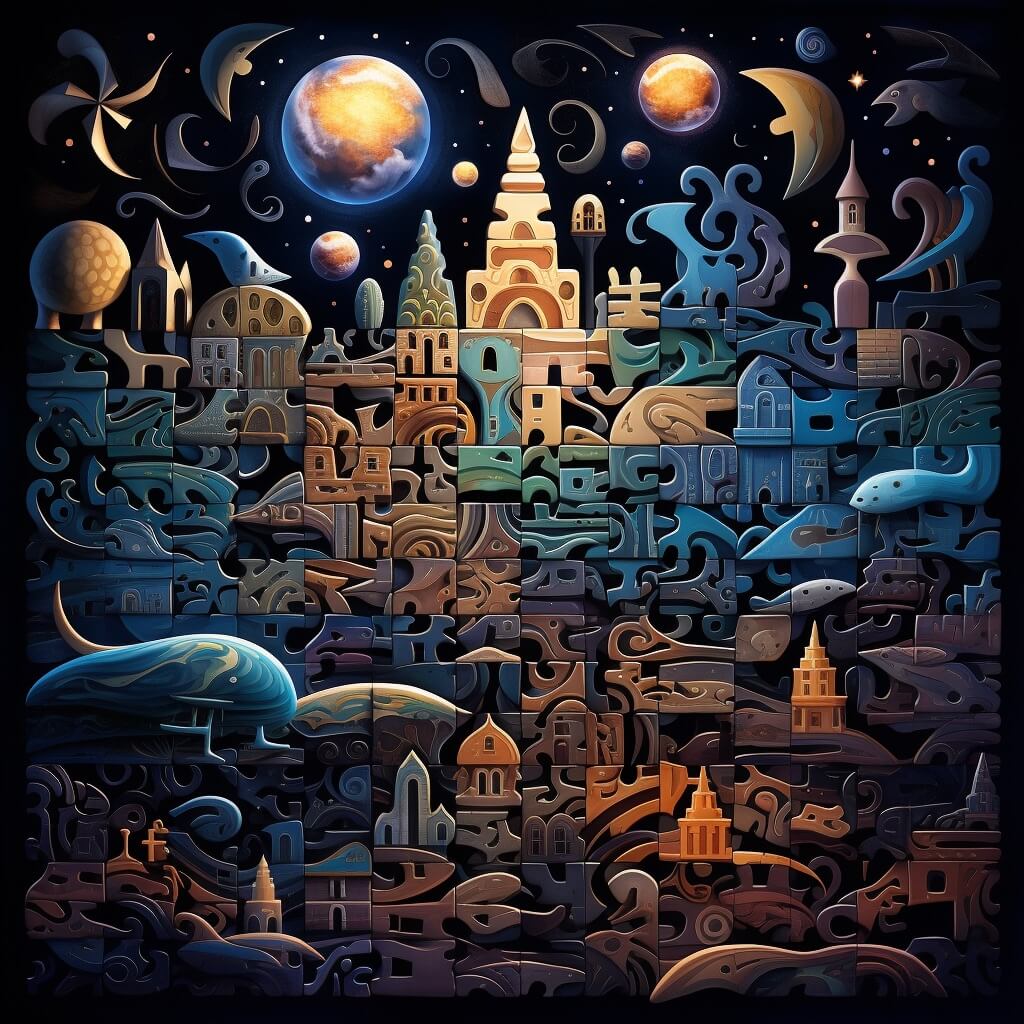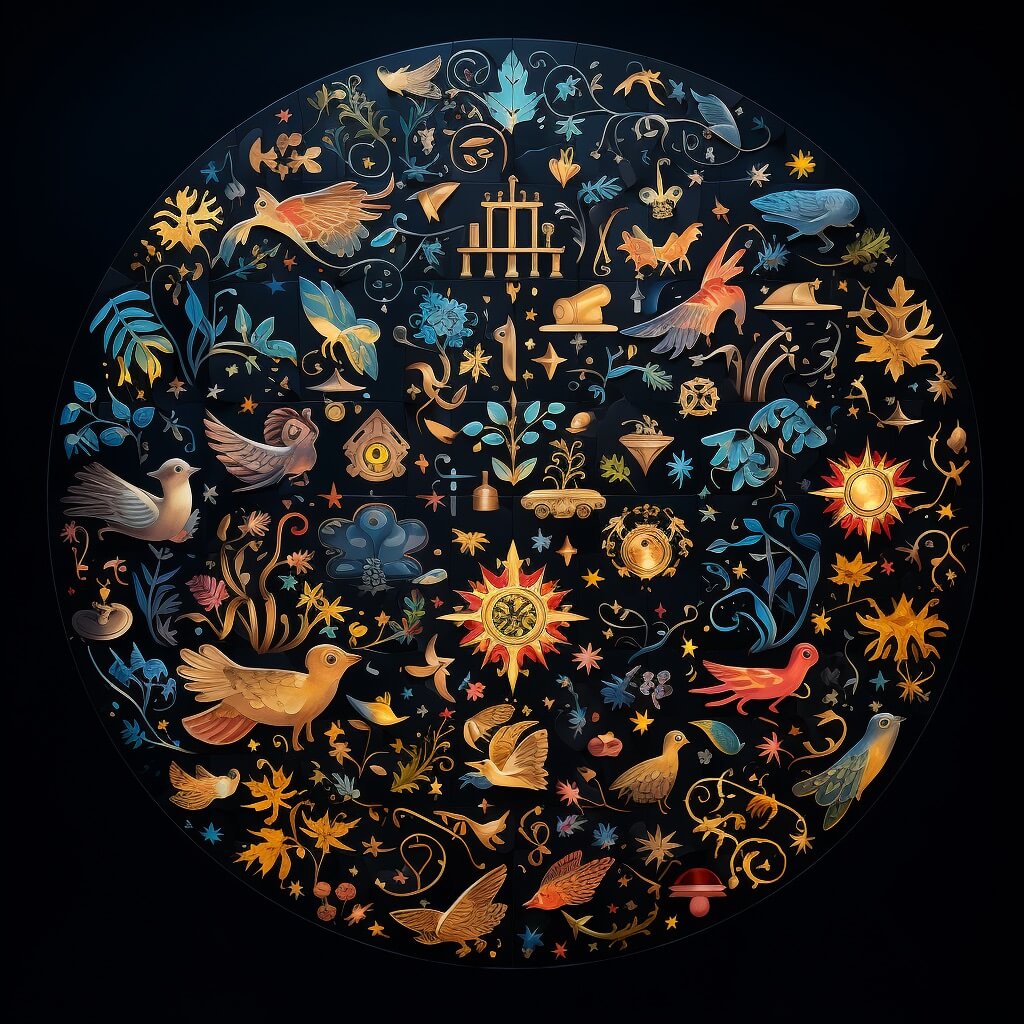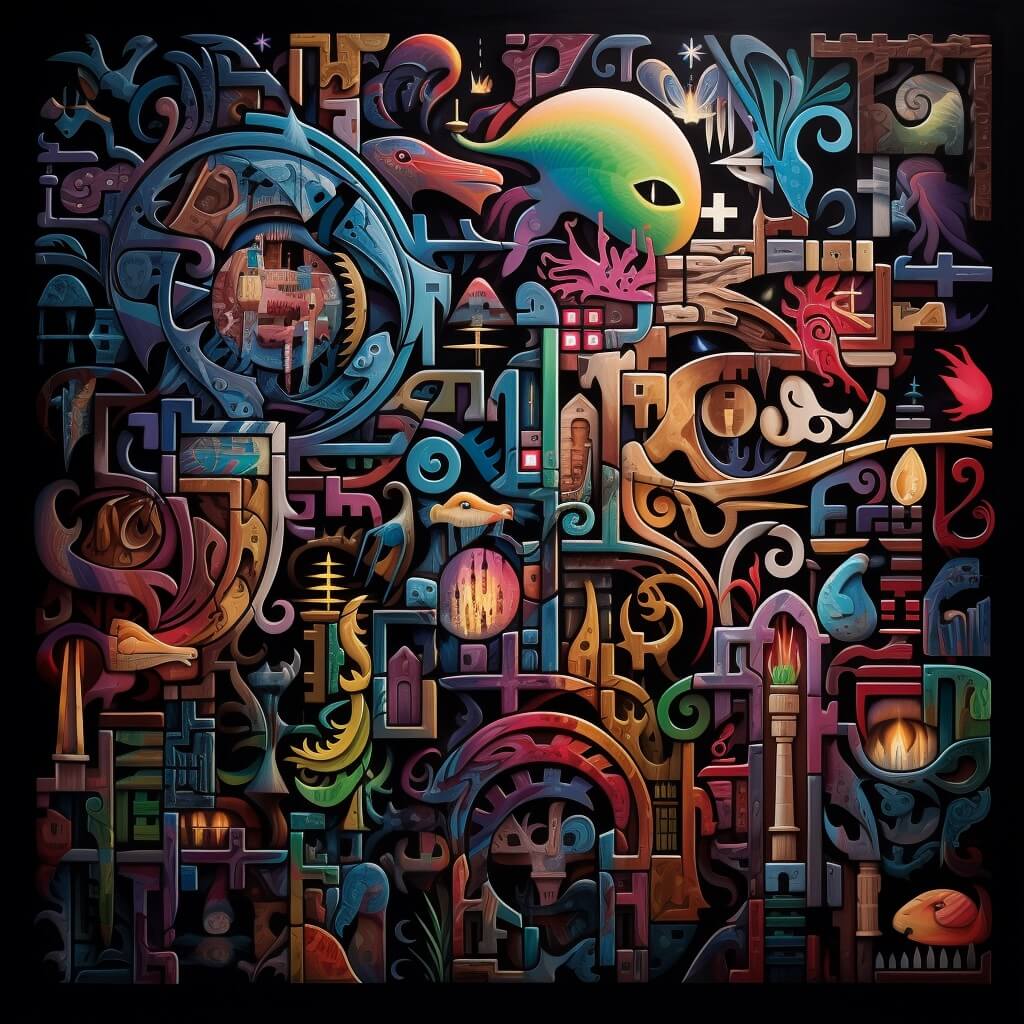Dreams have always been a source of fascination and wonder. They transport us to worlds unknown and often leave us pondering their significance. Central to these nocturnal narratives are dream symbols, the keys that unlock deeper understanding. In this guide, we’ll unravel the meaning behind common dream symbols, helping you decipher your own dream stories.
Dream Symbols
Dreams are the mind’s theater, staging stories that are often filled with symbolic representations. While each dream is deeply personal and unique, there are universal symbols that many of us encounter. These symbols carry meanings, messages, or insights about our innermost desires, fears, and experiences. Delve into 20 of the most common dream symbols and discover the potential meanings behind them.
- Water: Often representative of our emotions and the subconscious. Calm water might suggest emotional peace, while turbulent waters can indicate suppressed feelings or overwhelming emotions.
- Flying: A widespread symbol reflecting a desire for freedom, transcendence, or escape from real-life constraints.
- Falling: Typically tied to feelings of insecurity, instability, or fear of failure. It may signal that something in your life feels out of control.
- Snakes: These creatures can symbolize transformation due to their shedding skin, hidden fears, or wisdom. They can also be associated with danger or deceit.
- Houses: Representing the self or the soul, the different rooms in a house can signify different aspects or memories of one’s life.
- Roads: A symbol of life’s journey, your current path, or choices. The condition of the road can give additional insight into the feelings associated with your journey.
- Teeth Falling Out: A common symbol, often tied to feelings of powerlessness, aging, health concerns, or concerns about appearance.
- Fire: Fire can be dual-natured. It might signify destruction, anger, or out-of-control emotions but can also represent passion, transformation, or enlightenment.
- Birds: Typically, birds symbolize freedom, perspective, or spiritual messages. The type of bird and its action can refine its specific meaning.
- Chasing: Being chased in a dream usually stems from feelings of anxiety, threats, or avoidance in your waking life.
- Death: While unsettling, dreaming of death rarely signifies a literal death. It often represents endings, change, or personal transformation.
- Birth: Dreams of birth can symbolize the beginning of a new idea, project, or phase in your life.
- Bridges: Bridging two places or states of being, they can represent transitions, connections, or making important decisions.
- Ladders: Climbing up or down a ladder can reflect your current path towards your goals or how you perceive your successes and failures.
- Forests: Dense and mysterious, forests may symbolize the unknown. It can reflect feelings of being lost, overwhelmed, or embarking on a journey of self-discovery.
- Tunnels: Signifying a pathway or journey, tunnels can represent hope (seeing the light at the end) or feelings of constriction and darkness.
- Mountains: These grand landforms often symbolize obstacles, challenges, or goals. Climbing a mountain can represent a tough journey with a rewarding end.
- Clocks: A ticking clock can symbolize the passage of time, life’s fleeting nature, or feelings of being pressed for time.
- Exams: Dreams of taking exams often relate to self-evaluation, fear of failing, or being judged by others.
- Flowers: Blooming flowers can represent growth, potential, or beauty. They might also indicate appreciation or fleeting happiness.
- Children: Often symbolize innocence, hope, or a part of yourself from childhood. They can also represent a new beginning or potential.
- Deserts These vast, barren landscapes can symbolize emptiness, loneliness, or feelings of being lost. Alternatively, they can represent purity and transformation.
- Moon: A symbol of the feminine, emotions, intuition, and cycles of time. Its phase (new, full, crescent) can provide more nuanced meanings.
- Stars: Representing hope, guidance, or distant goals. They might also symbolize the unknown or the vast universe.
- Animals: Depending on the animal, they can represent different instincts, behaviors, or characteristics. For example, lions can symbolize strength and courage, while a fox might indicate cunning.
- Mazes: Feeling trapped, confusion, or searching for a way out of a complicated situation.
- Mirrors: Reflections of the self, self-perception, or confronting something about oneself. The clarity or obscurity of the mirror can add layers to its meaning.
- Shoes: Walking a mile in someone’s shoes, or your personal journey. The condition and type of shoe can offer further insights.
- Gardens: Growth, potential, or what you’ve nurtured and cultivated in your life. A barren garden might represent lost opportunities or neglect.
- Storms: Emotional turbulence, internal conflict, or a brewing situation in your waking life.
- Locks and Keys: Barriers, secrets, or unlocking potential. A key can represent a solution or an answer.
- Books: Knowledge, past experiences, or seeking wisdom. The content of the book can provide more context.
- Rivers: Flow of life, emotional state, or the passage of time. The river’s speed and clarity can give more detailed insights.
- Islands: Solitude, isolation, or a desire for a break. It can also represent stability amidst emotional turmoil.
- Jewelry: Self-worth, values, or aspects of identity. The type (ring, necklace) and material (gold, silver) can further specify its meaning.
- Vehicles (cars, buses): Your path in life, control, or the direction you’re headed. Condition and control of the vehicle play a role in interpretation.
- Fruits: Results of your labor, temptation, or fleeting pleasures. The specific fruit (e.g., apple for temptation) can provide clarity.
- Doors: Opportunities, transitions, or choices. An open door might represent new opportunities, while a closed one might mean missed chances.
- Music: Emotions, harmony in life, or memories. The type and tone of music can indicate specific feelings or situations.
- Mountaintop: Achievement, broadened perspectives, or the culmination of a journey. The process of reaching the top can signify the challenges faced.
- Oceans: Representing vast emotions, the mysteries of the subconscious, or feelings of depth and enormity. The state of the ocean (calm, stormy) can offer nuanced meanings.
- Castles: Aspirations, protection, or grand ambitions. They can also symbolize barriers or a desire to retreat.
- Sun: Often associated with life energy, optimism, a new beginning, or clarity. It’s a universal symbol of radiance and warmth.
- Wounds: Painful memories, traumas, or vulnerabilities. The healing process of the wound can signify personal recovery.
- Cages: Feeling trapped, limited, or restrained. It may also reflect feelings of protection or shielding something valuable.
- Glasses or Lenses: Clarity, vision, or perception. Broken glasses might signify distorted views or inability to see something clearly.
- Towers: Ascension, ambition, or isolation. It can also represent a viewpoint or perspective from a higher vantage point.
- Clock Towers: The ever-present tick of time, major life milestones, or a reminder of fleeting moments.
- Balloons: Ambitions, aspirations, or feelings of lightness and buoyancy. A deflating balloon might indicate disappointments or unmet expectations.
- Rain: Renewal, cleansing, or emotional release. It can also represent sadness or the shedding of tears.
- Dance: Freedom, harmony, or the rhythms of life. The type of dance can offer specific insights into feelings or situations.
- Candles: Enlightenment, hope, or life’s fragility. The state of the candle (lit, melting) provides added context.
- Forests at Night: The unknown, subconscious fears, or facing the mysteries of one’s own mind.
- Portals: Transitions, opportunities, or gateways to new experiences or phases in life.
- Statues: Immobility, reverence, or things unchanging. It might also symbolize ideals or values held in high regard.
- Deserted Towns or Cities: Loneliness, abandoned projects, or a situation or place void of energy and life.
- Puppets: Manipulation, control, or feeling like someone else is pulling the strings in your life.
- Roots: Foundation, personal history, or deep-seated beliefs and values.
- Crowds: Conformity, feeling lost or overwhelmed, or the collective unconscious.
- Butterflies: Transformation, renewal, or fleeting beauty. They often symbolize positive change or evolution.
- Labyrinths: Journeys of self-discovery, confusion, or complex situations requiring solutions.
- Lakes: Inner emotions, depth of feeling, and possible hidden layers beneath calm surfaces.
- Volcanoes: Suppressed emotions, explosive reactions, or a situation about to erupt.
- Babies: Innocence, new beginnings, potential, or vulnerabilities.
- Elevators: Ascension, transition, or feelings of rising or falling in status or emotions.
- Anklets: Restrictions, commitment, or a symbol of adornment and beauty.
- Dragons: Strength, power, fears, or untapped potential.
- Ice or Snow: Frozen emotions, feeling stuck, purity, or a period of inactivity.
- Deserts at Night: Isolation, vast emptiness, or the mysteries hidden in one’s subconscious.
- Auroras (Northern Lights): Magic, guidance, and ethereal beauty or unexpected joys.
- Rings: Commitment, infinity, or a situation or relationship that’s binding.
- Weapons (e.g., swords, guns): Conflict, defense, or feelings of danger.
- Lightning: Sudden realization, inspiration, or unexpected and intense events.
- Quicksand: Feeling stuck, overwhelming situations, or sinking into a problem.
- Harbors: Safety, shelter, or transitioning between a journey and stability.
- Suits of Armor: Defense, protection, or hiding one’s true self.
- Masks: Concealment, alter egos, or presenting a different face to the world.
- Ruins: Past experiences, forgotten memories, or the remnants of what once was.
- Tornadoes or Whirlwinds: Chaos, emotional upheavals, or situations spiraling out of control.
- Bridges (Collapsed or Broken): Disconnection, broken paths, or failed transitions.
- Cathedrals: Spirituality, reverence, or seeking higher wisdom.
- Dolls: Childhood, lost innocence, or aspects of oneself that might feel controlled.
- Vines: Growth, entanglement, or connections.
- Temples: Spiritual exploration, reverence, or a sacred space within oneself.
- Floods: Overwhelming emotions, being swamped with feelings, or situations that feel uncontrollable.
- Eyes: Perception, insight, or how you view the world or situation.
- Nests: Home, comfort, or nurturing. It might also symbolize familial bonds or motherhood.
- The Horizon: Future aspirations, goals, or looking forward to new opportunities.
- The Sun Setting: Endings, closure, or transitions into a new phase.
- Phoenix: Rebirth, renewal, rising from one’s own ashes.
- Rainbows: Hope, promise, or the calm after a storm.
- Pyramids: Ancient wisdom, mysteries, or the continuity of existence.
- Feathers: Freedom, messages from the spiritual realm, or lightness.
- Insects (e.g., ants, spiders): Small annoyances, persistence, or feelings of being overwhelmed by minor troubles.
- Prisons: Feeling trapped, restricted, or facing consequences.
- Astronauts or Outer Space: Exploration, new frontiers, or feeling out of place.
- Jungles: Wildness, untapped aspects of oneself, or unpredictability.
- Tombstones or Graveyards: Endings, past memories, or contemplation of mortality.
- Ladders (Broken or Falling): Broken aspirations, setbacks, or interrupted progress.
- Unicorn: Magic, purity, or the rare and unattainable.
The Origins of Dream Symbols
 Dreams have fascinated humanity for millennia, serving as both a subject of scientific inquiry and a source of divine messages across various cultures. Ancient civilizations, from the Babylonians and Egyptians to the Greeks and Romans, considered dreams as omens or prophecies, often turning to dream interpreters for guidance.
Dreams have fascinated humanity for millennia, serving as both a subject of scientific inquiry and a source of divine messages across various cultures. Ancient civilizations, from the Babylonians and Egyptians to the Greeks and Romans, considered dreams as omens or prophecies, often turning to dream interpreters for guidance.
Various historical records, like the Egyptian “Dream Book” or the biblical accounts of prophetic dreams, offer insights into how these ancient cultures viewed dream symbols. Over the ages, common symbols like water, animals, and celestial bodies have taken on universal interpretations, transcending cultural and temporal boundaries.
However, the understanding and interpretation of these symbols have evolved. While ancient cultures might see a snake as a deity or a divine message, modern interpretations could link it to transformation or hidden fears. This historical ebb and flow reflect the dynamic nature of dream symbolism, influenced by societal changes, beliefs, and evolving human understanding.
The Psychology Behind Dream Symbols
The 20th century witnessed a surge in interest in dream interpretation, primarily fueled by psychoanalytic theories. Psychologists endeavored to understand the intricate tapestry of the subconscious mind and how dream symbols played a role in revealing its depths.
Carl Jung’s Theory on Dream Symbols
Carl Jung, a Swiss psychiatrist, introduced the concept of the “collective unconscious”—a shared reservoir of memories, ideas, and symbols inherent in all humans. He believed that dream symbols are manifestations of these archetypes, universal themes, and characters that resonate across cultures.
For Jung, symbols like The Hero, The Mother, or The Shadow, recurring characters in dreams, are not random. They are deeply rooted in our collective psyche, representing universal challenges, relationships, and journeys. By recognizing and understanding these archetypes, one can tap into a well of shared human experiences and personal growth.
Sigmund Freud’s Interpretation of Dreams
Freud, the father of psychoanalysis, held a different perspective. He believed dreams to be a window into our suppressed desires, with dream symbols serving as coded messages. For Freud, many dream symbols, particularly those dealing with objects and actions, had sexual underpinnings and reflected suppressed desires.
Dreams, in Freud’s view, are wish-fulfillments. The symbols within them act as veiled manifestations of desires too controversial or taboo for the conscious mind to acknowledge. Decoding these symbols, then, becomes a journey into one’s deepest, often concealed, wishes.
Common Themes in Dreams and Their Symbolism

Every dream is a tapestry woven with threads of personal memories, emotions, and universal themes.
Certain patterns and themes recur in dreams across individuals and cultures. Falling, flying, being chased, or finding oneself in a familiar yet altered place are just a few of the myriad common dream themes. These scenarios, often emotionally charged, carry symbols with both personal and universal interpretations, shedding light on our fears, aspirations, and subconscious workings.
How to Interpret Your Own Dream Symbols
Dream interpretation is both an art and a science. While there are universal symbols, it’s essential to consider one’s unique life experiences and feelings.
The Role of Personal Experience
Your unique history, emotions, and memories play a pivotal role in dream interpretation. A dog, for instance, might be a symbol of loyalty and friendship for a pet lover, whereas for someone with a traumatic dog-related experience, it could symbolize fear. Recognizing this personal context is crucial in unravelling the dream’s message.
Dream Journals and Their Importance
Maintaining a dream journal can be transformative. By documenting dreams upon waking, you capture vivid details that might fade as the day progresses. Over time, patterns, recurring symbols, and themes emerge, offering profound insights into one’s psyche. It becomes a tool to track personal growth, understand emotional responses, and navigate life’s challenges.
Dreams are the language of our subconscious, a blend of personal experiences and universal themes. By understanding the symbols that appear in our dreams, we not only gain insight into our own psyche but also connect with age-old human experiences. As you embark on your journey of dream exploration, remember that every dream offers an opportunity for growth, understanding, and self-discovery.

